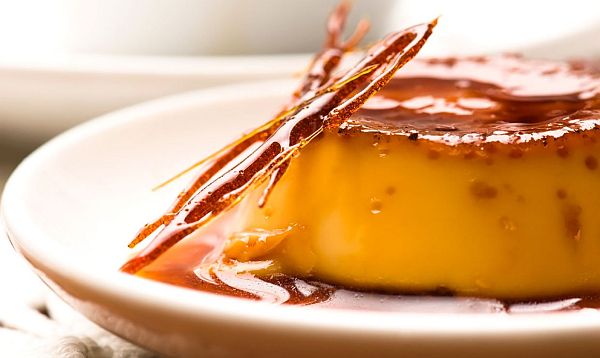I'm one of those people who think that savory food is just a pit stop before you get to the desserts. I'm pretty sure that if they do a body scan of me one day, they'll find two stomachs: the regular one, and a special hidden one that comes alive at dessert time.
To be a fan of sweets is difficult in a country like Mexico, because our pastry game is not up to the same standards as the food that made us famous everywhere. There are tortillerías in France and China; tamales course through the veins of the US; tacos, salsa, tequila, and mezcal are common around the world.
But no one talks about Mexican desserts.
Our innovation in desserts is limited to a few ingredients modified in a few different ways, depending on the place where they're served. Take flan, for instance: it's made with coconut on the beach and with cheese in taquerías. Chocolate pie is always available - excessively sweet and (if we are lucky enough) sometimes soaked in wine. With some, the icing is so thick that you need to remove with a spoon, because that much glucose can make even the best-trained pancreas fail. Our proximity to the US has introduced us to the cheesecake, which is delicious. With the variety of fruits and ingredient that we have available, we could really do wonders with it; instead, we just use the fruit to make the cheesecake sauce. It's truly heartbreaking.
 |
The story of Mexico's desserts would appear to have stopped in the 19th century. These dishes scream convent food, often utilizing only three ingredients: milk, eggs, and sugar. The desserts of today are the same that we have eaten for years, and they all have a very similar flavor - corn pie, tres leches, arroz con leche - and every Mexican restaurant has the same dessert repertoire. (Sure, some might add nuts to the classic crepes with toffee and some might add cream cheese or marmalade, which are more sugar with fruit than the other way around.) Some people who try to be more "modern" use Nutella as a crutch instead - and that's how some atrocities such as the Nutella pizza were created.
But there is still hope. Many chefs in Mexico have begun exploring the world of desserts to make ours better.
Today in Mexico City, you can eat a chocolate bonbon with fried garlic - or even one with grasshoppers - in the chocolate gallery Dolcenero Desing; you can travel north of the city to eat a famous dessert of mole with yogurt at Espaisucre; you can try the sought-after sapodilla and pulque dish at Elena Reygadas in Rosetta; or you can eat a orange macaroon with mescal and worm salt at Theurel & Thomas. Chefs Fernanda Covarrubias and Jesús Escalera, owners of La Postrería in Guadalajara City, created an oasis of sweets where you can eat desserts that, besides being balanced and delicious, are artistic enough to make you think, It's too beautiful, I don't want to destroy it!
But even with these new and creative desserts, something strange always happens. Mexican people still feel bereft without their beloved mega-sweet flavors.
Is it a taste issue? Are we helplessly biased to the super-sweet?
To understand this phenomenon, I called up a few well-regarded Mexican pastry chefs. "We are a country that is used to eating sour and spicy candies since we were very little. But when you try to add these elements to a restaurant dessert, the customer tends to reject it because they can't accept that a dessert doesn't have a high level of sweetness," tells me Dolcenero Desing's chef, Mauricio Montiel.
 |
"I think Mexico is a country that likes candy but not so much desserts," said Sucre i Cacao pastry chef Carlos Rámirez Roure. But the problem is that diners don't understand that the dessert world is not limited to simply sweet flavors. Fernanda Prado, director of Espaisucre México, believes that most people "can't conceive the fact that there could be fine-dining dessert restaurants, with a degustation menu like with savory food, even when the techniques are just as complex and the ingredients are of similar quality."
So, what can we expect on the future of desserts here in Mexico?
According to Roure, "We are, in our way, getting better—because desserts are going through the same process as our savory cuisine." Montiel believes that "pastry chefs go through a constant evolution and that won't stop anytime soon." Prado agrees that "there is [now] greater specialization and new places are opening up that enrich the sweet world of Mexico." Perhaps some day we all will learn to appreciate other levels of flavors in our desserts and we will abandon our affair with extreme sweetness.
Imagine that: a balanced and beautiful dessert that's delicious, and pairs well with sour, bitter, sweet, and savory flavors. That's the kind of greatness to which we aspire - but it still couldn't ever make us stop loving our flans and tres leches.
Original article


